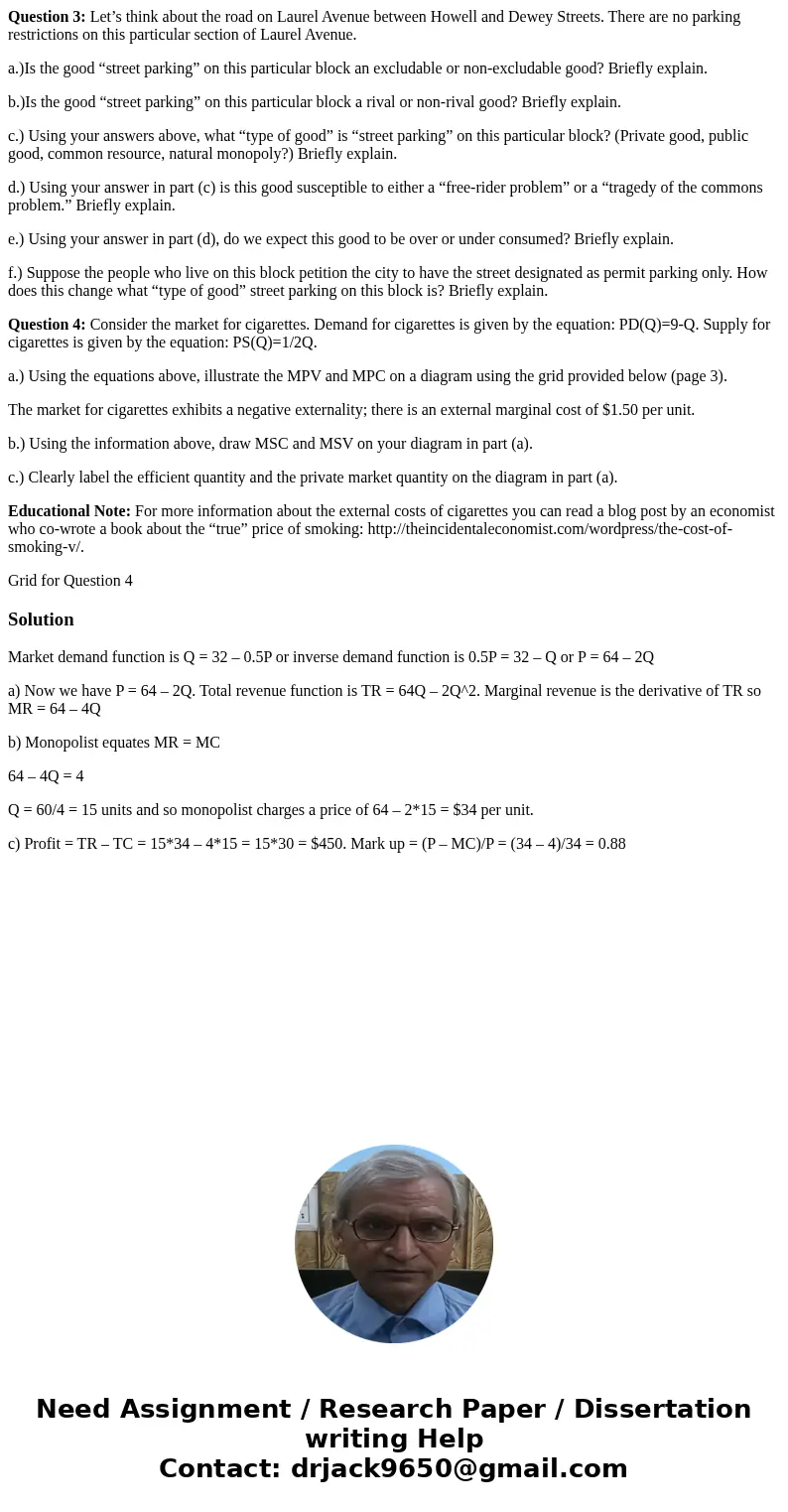Question 3 Lets think about the road on Laurel Avenue betwee
Question 3: Let’s think about the road on Laurel Avenue between Howell and Dewey Streets. There are no parking restrictions on this particular section of Laurel Avenue.
a.)Is the good “street parking” on this particular block an excludable or non-excludable good? Briefly explain.
b.)Is the good “street parking” on this particular block a rival or non-rival good? Briefly explain.
c.) Using your answers above, what “type of good” is “street parking” on this particular block? (Private good, public good, common resource, natural monopoly?) Briefly explain.
d.) Using your answer in part (c) is this good susceptible to either a “free-rider problem” or a “tragedy of the commons problem.” Briefly explain.
e.) Using your answer in part (d), do we expect this good to be over or under consumed? Briefly explain.
f.) Suppose the people who live on this block petition the city to have the street designated as permit parking only. How does this change what “type of good” street parking on this block is? Briefly explain.
Question 4: Consider the market for cigarettes. Demand for cigarettes is given by the equation: PD(Q)=9-Q. Supply for cigarettes is given by the equation: PS(Q)=1/2Q.
a.) Using the equations above, illustrate the MPV and MPC on a diagram using the grid provided below (page 3).
The market for cigarettes exhibits a negative externality; there is an external marginal cost of $1.50 per unit.
b.) Using the information above, draw MSC and MSV on your diagram in part (a).
c.) Clearly label the efficient quantity and the private market quantity on the diagram in part (a).
Educational Note: For more information about the external costs of cigarettes you can read a blog post by an economist who co-wrote a book about the “true” price of smoking: http://theincidentaleconomist.com/wordpress/the-cost-of-smoking-v/.
Grid for Question 4
Solution
Market demand function is Q = 32 – 0.5P or inverse demand function is 0.5P = 32 – Q or P = 64 – 2Q
a) Now we have P = 64 – 2Q. Total revenue function is TR = 64Q – 2Q^2. Marginal revenue is the derivative of TR so MR = 64 – 4Q
b) Monopolist equates MR = MC
64 – 4Q = 4
Q = 60/4 = 15 units and so monopolist charges a price of 64 – 2*15 = $34 per unit.
c) Profit = TR – TC = 15*34 – 4*15 = 15*30 = $450. Mark up = (P – MC)/P = (34 – 4)/34 = 0.88

 Homework Sourse
Homework Sourse